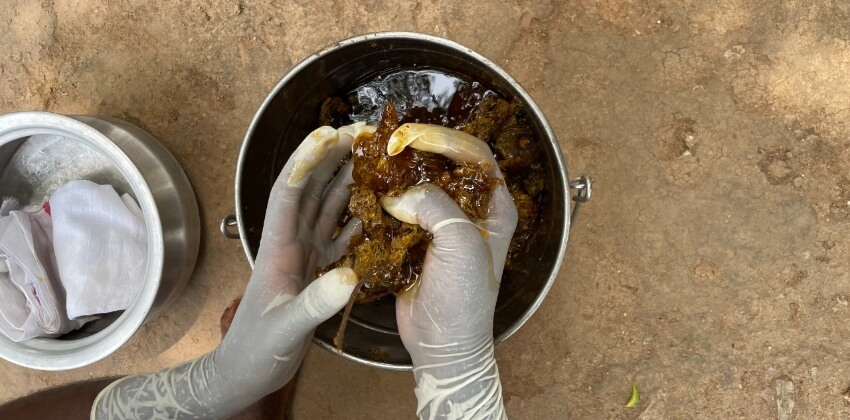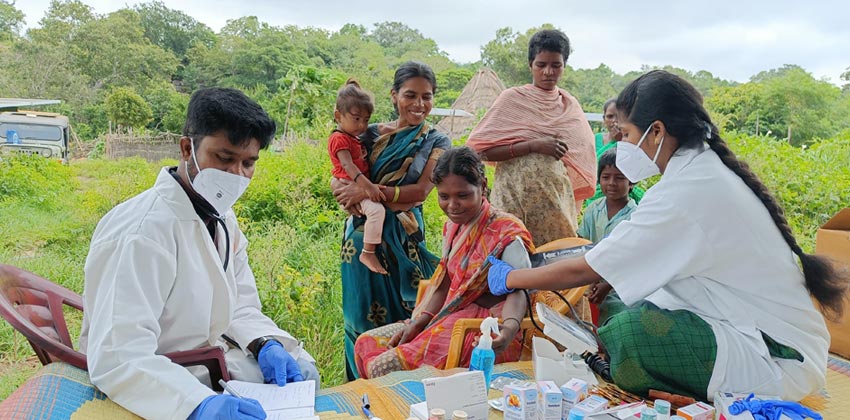Honey drips down K Siva’s gloved forearms as he squeezes the combs over a thin white cloth, with a satisfying squelch. A resident of Thirumalagiri Chenchu colony in the Nagarjunasagar Srisailam Tiger Reserve, he is one of the nearly 25 honey collectors from the indigenous tribe. He will soon set this pot of golden honey on a double boiler to prolong its life without fermentation, as his companion dog sleeps in the afternoon sun.
Early the previous morning, Siva had headed out 30 km deep into the NSTR forest, a knife and a bamboo stick in hand. Accompanying him was his wife, Mounika. She carried 2 water bottles and a tiffin she had packed for them in her hand. Being hunter-gatherers by tradition, the Chenchu tribes consider honey collection one of their primary professions.
For the months from March to June, the Chenchu honey collectors roam the forests, each collecting up to 120 kg of honey. Siva and his wife set out at 6 am yesterday on a breakfast of rice and chutney; by the time they came back in the evening, they had collected an average of 5 kg of honeycombs, which will yield 2 kg of honey.
“We squeeze the combs we have collected to get the honey into this steel bucket, and then filter that into a pot using a thin cloth,” says Siva. The raw honey obtained this way is more nutritious than mass produced, commercial honey. The latter undergoes filtration through heating and rapid cooling to weed out bee parts, wax and pollen, giving it a homogenous texture and colour to prevent early crystallisation. However, in this process, most of its minerals and enzymes, such as glucose oxidase, which gives it antimicrobial properties, are broken down.
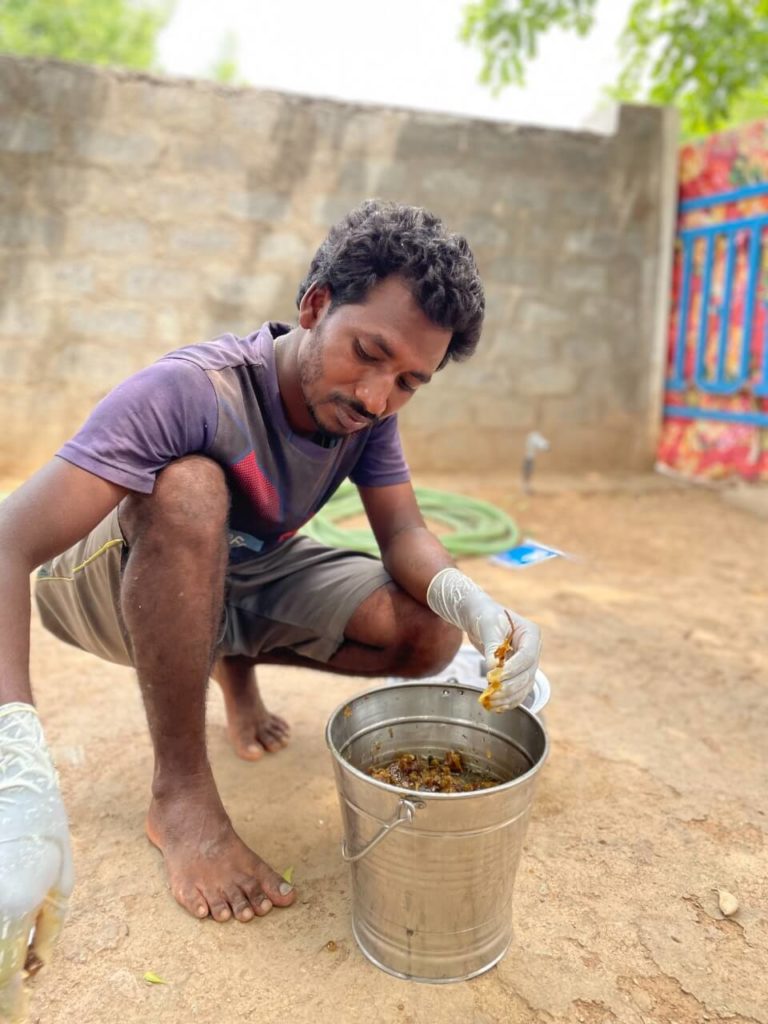
While Siva has not studied all this in school, he has been collecting honey since he was 12 years old, accompanying his father who taught him everything he knows about it. Once he was married, he passed on this closely guarded craft to his wife, who now accompanies him.
Follow the bees
The couple has developed a keen sense of hearing the buzz of bees. “We start from ponds and borewell holes; that is where the worker bees gather. From there, we keep an eye on the path they are taking, so that they lead us to the hive. We follow them maintaining a distance and search for hives on that path,” says Siva.
The type of hive they will find depends on the type of bee; there are 5 main types in the NSTR forests that Siva recognizes. “There is the chinna masara (Indian hive bee) — thin like mosquitoes. They build their hives in chettu torralu (a semi-enclosed cavity in the trunk of a tree). The second is the puttaka tena pera (or chinna pera), which prefers the light, and builds on branches. The pedda pera is bigger, and hangs its hives at heights from rocky hills or tall structures like signal towers. The fourth kind is the foreign one, which came from Europe and people started cultivating them in boxes here. The ones that escape build their hives in mounds on the ground. Then there’s the sanna masara, which lives deep inside the forest and builds its nest from the ground; a three-year hive can even go up to 20 feet,” he says. The pedda pera, or the rock bee, is special to the region.
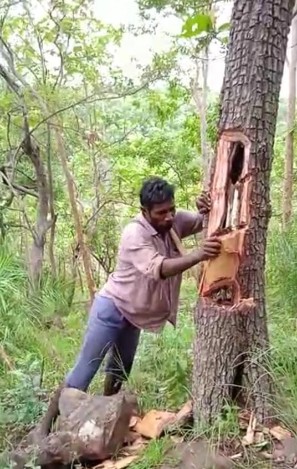
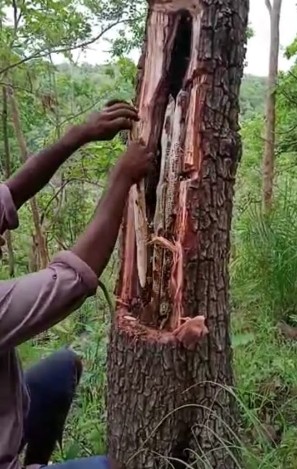
Honey being removed from the bark of a tree in NSTR. Picture by: M Javeed.
Once they find the hive, depending on its size, they smoke the bees out by burning neem leaves and using the bamboo as a pipe. The bees leave the hive for 30 to 60 minutes, giving them time to collect the honeycombs.
“Of course, there is a good chance of getting stung, especially when I was still learning,” he says, in a matter-of-fact manner, adding, “My wife and I have been stung about 5 or 6 times.” Strictly in these cases of emergency alone, Siva has learnt a trick to soothe the sting until he can go to a doctor. “The honey is concentrated in the upper section of the hive. However, the other cells, where the larvae grow, has the ‘bee milk’,” he says, referring to the royal jelly secreted by the worker bees to feed the larvae. “We apply the milk on the skin to soothe the sting, until we can go to a hospital.”
However, when the hives grow in cavities and dark spaces, which means they have to put their hand blindly through the void, it is difficult to ascertain what stung or bit them. In such cases, they can’t be sure what they can use for first aid, and must walk back to the nearest hospital immediately. Bites aren’t the only danger; falls are too — they may fall off the tree or hill they climb to get the honey, or the hive may fall on them.
Honey collection as a livelihood
For their hard work and risk, a kilogram of honey fetches them Rs 600 during spring and summer, and Rs 1,200 in the off-season. “Buyers come to our village from Srisailam and nearby towns. We don’t sell all of it, we store some so that we can sell in the off-season too,” explains Siva.
One of their key driving principles is that the practice of collecting honey must be sustainable. They give enough time for honeycombs to develop, gathering only within those 3 months in a year. The honey is primarily used for their own consumption and only the excess is sold.
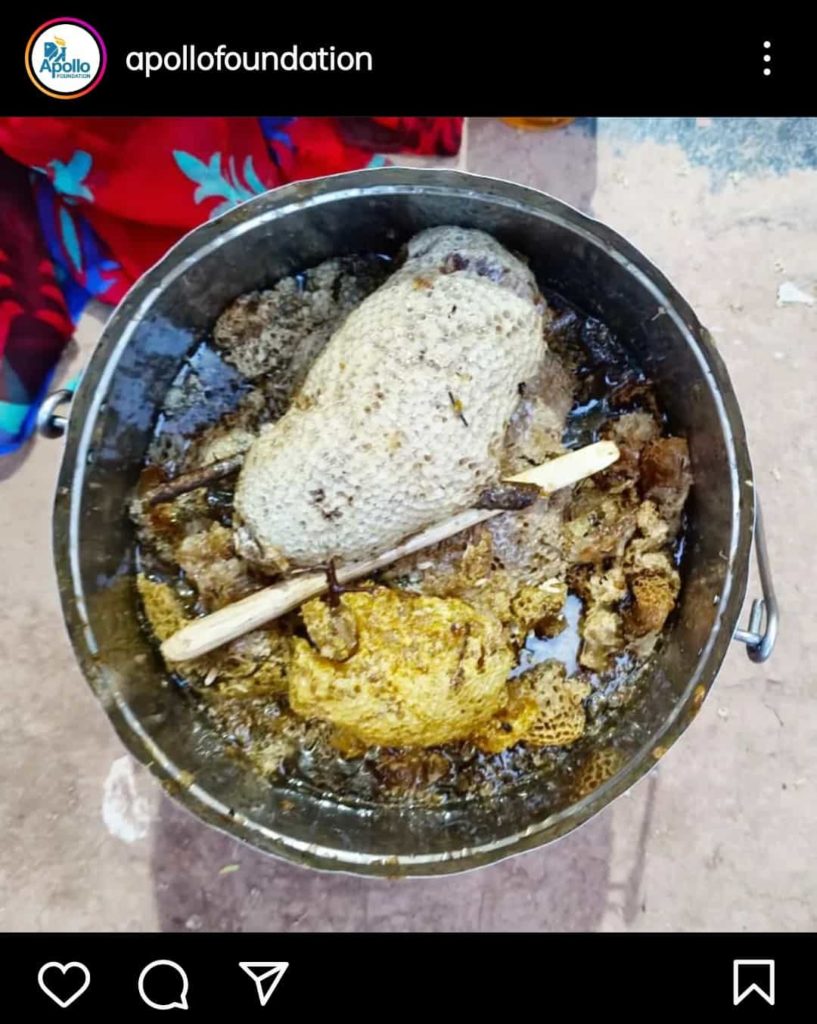
“There are frequent power cuts here. That’s when the wax from the combs comes in handy. After filtering the honey, you boil the leftover in a pot of water (double boiler), and let it become thick, like soup. The wax then emerges on top,” says Siva. This is used to light up the dark night in the NSTR.
“We gather for our survival; we live off the forest,” says Siva. Ideally, he wouldn’t want his 8-year-old son, who attends school to take up the same profession. “But you never know what the future holds.”
